Company of Heroes 3 review

Caesar once began his Commentaries on the Gallic War by dividing Gaul into three parts (which no student of Latin that had to memorize the passage in school will ever forget), so I judge myself to be in good company doing the same for this review of Company of Heroes 3, the newest RTS game developed by Relic Entertainment.
I’ll begin with the narrative North African campaign, followed by the new dynamic Italian campaign, and then end with thoughts on multiplayer and everything else.
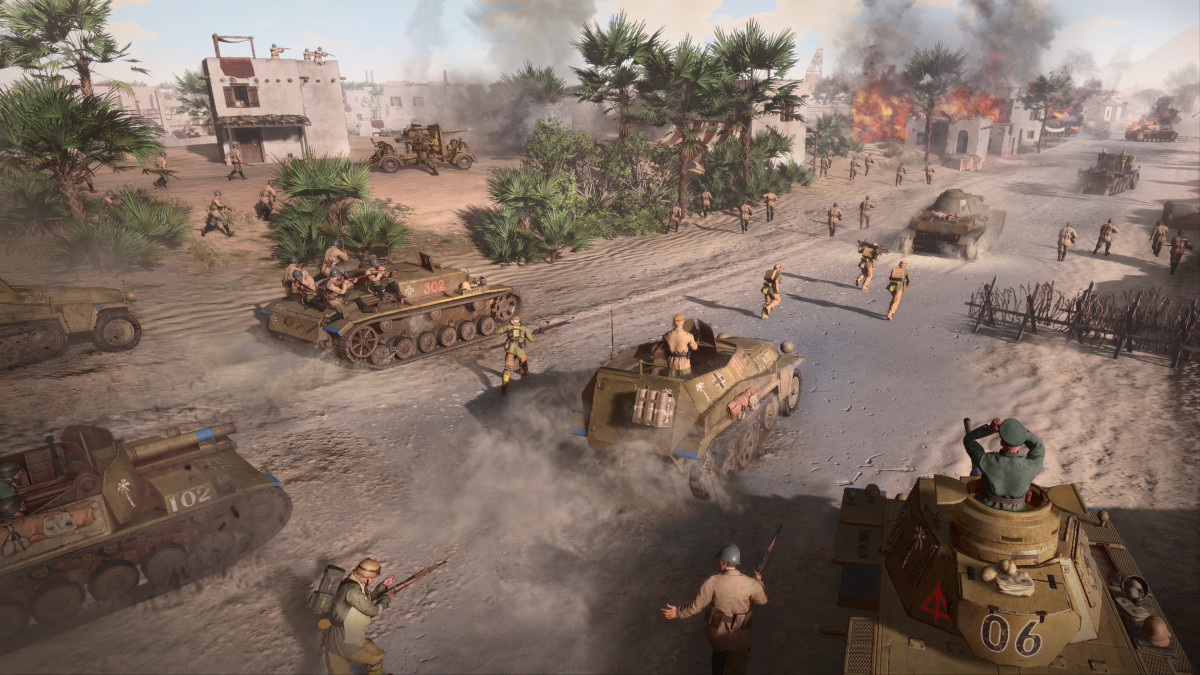
Company of Heroes 3 review: North African campaign
Players returning to Company of Heroes will be most familiar with the narrative of the African campaign: you play a series of missions set in the North African theater of World War II, following the DAK (Deutsches Afrikakorps) in their battle against the Allies. That’s how most Company of Heroes campaigns have played out so far.
The mission variety here is excellent, as every stage of the campaign has something new to offer. You break through defensive lines, raid convoys, burn supply depots, surround positions, evacuate allied forces, make a last stand until reinforcements show up – there’s no repetition and pretty much every mission type you could expect from a game set in WW2 is present.
What’s even better is how this is all presented – and I’m not talking about any fancy cinematic cutscenes here, because there are none. While you play the Germans following the exploits of Erwin Rommel and get to experience the full power fantasy you’d expect from that, the game does not fall into the trap of legitimizing popular myths about the war in North Africa. This is done through a second narrative string, which follows a family of Jewish Libyans in the breaks between missions. The father joins up with the British, while the mother and daughter stay in Benghazi, providing us additional perspectives on the war.
This allows Relic to effectively shine a light on popular misconceptions about this conflict theater, such as the fact that this war was not simply fought in empty deserts. The family experiences occupation by the Axis, being bombed by the Allies, and eventually the kidnapping and execution of Jews in North Africa. The campaign also does the remarkable job of unmasking the Rommel myth, while keeping the associated power fantasy intact for the players.
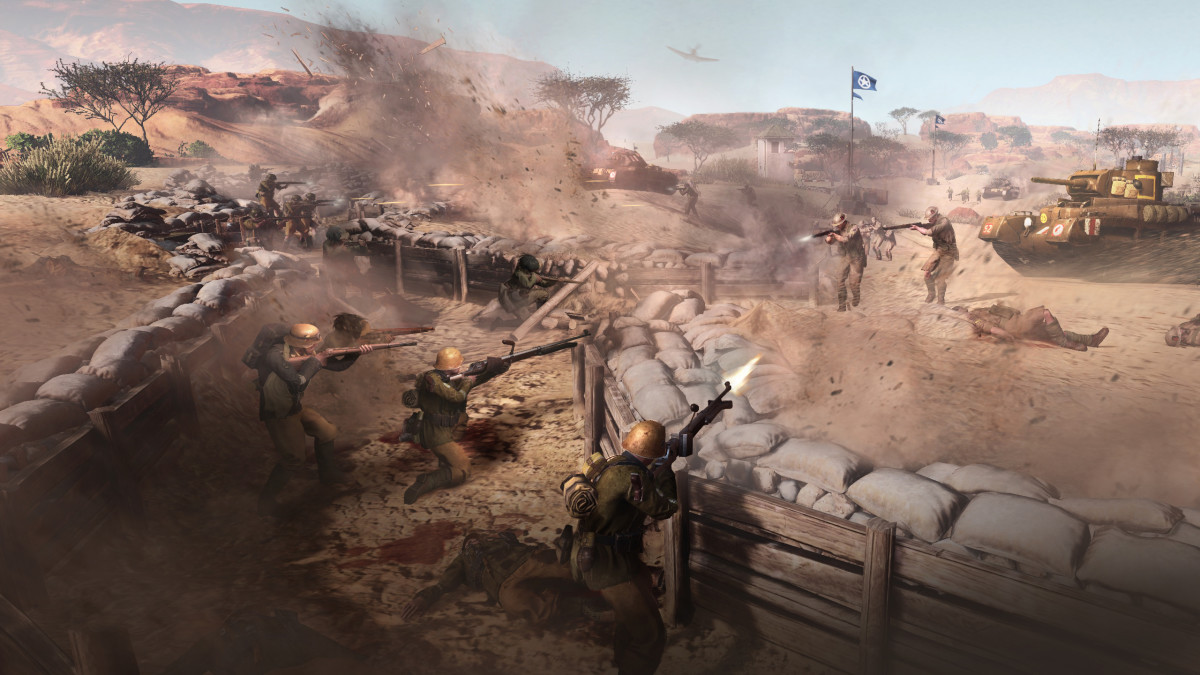
We get our briefings from the man himself and see how he achieves his victories (namely by superior intelligence gathering), while we also get perspectives not just from the Allies’ side, but on the Allies’ views, thanks to our native narrator, who is very insightful: “They seemed to want him to be seen as a formidable opponent”, he muses as the British are pushed back further and further by Rommel’s tactics and dub him the Desert Fox. “I still don’t know whether that was an excuse for their losses or to amplify their glory when they finally defeated him.” And that’s the birth of the Rommel myth on the British side in a nutshell.
Company of Heroes 3’s North African campaign manages to humanize and de-mystify this conflict in a masterful manner without taking away any of the fun. Having studied history and often cringing at how developers present it to their audience, I’m very impressed.
The only downside is that this campaign is not very long. On standard difficulty I blitzed through it in about 4.5 hours, so I would heartily recommend anyone with even a bit of RTS experience to play it on a higher difficulty setting to get more out of it.
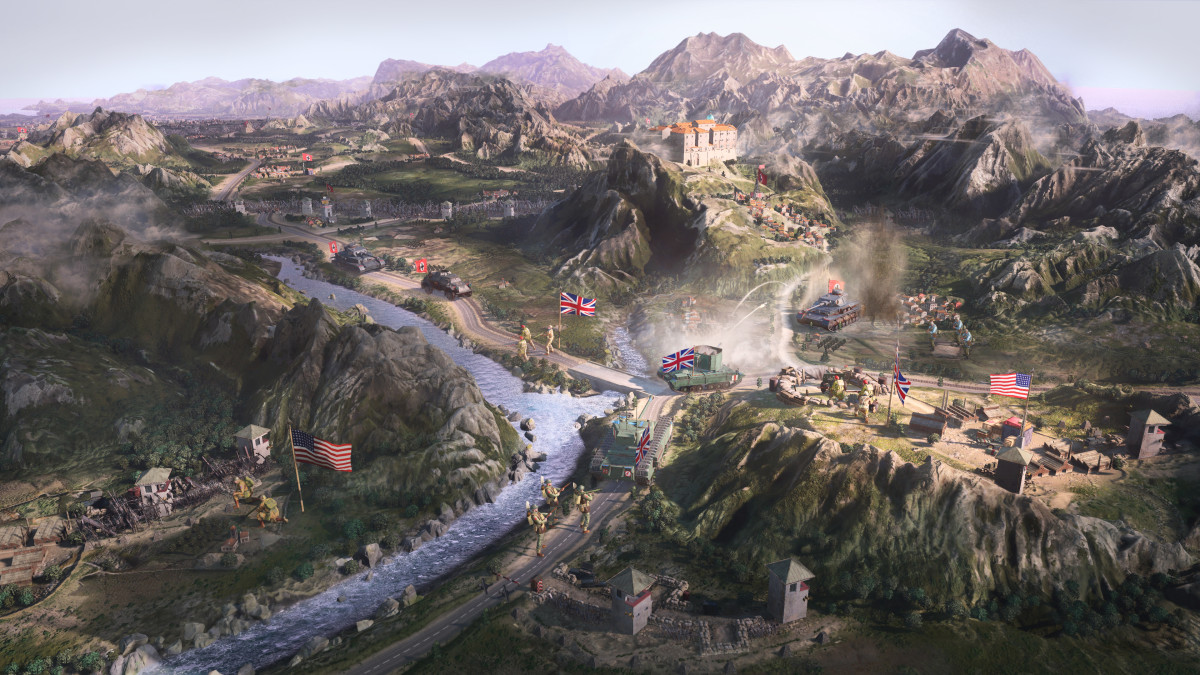
Company of Heroes 3 review: Italian campaign
Company of Heroes 3’s Italian dynamic campaign is the main course offered to solo players. Combining a turn-based strategy map of Italy with the real-time combat the series is known for, this campaign takes Company of Heroes 2’s experimental Ardennes Assault mode to the next level. You move your companies across a map of Italy, attacking and defending settlements, airfields, and German brigades.
Just like in Total War, these encounters will trigger real-time battles, which are basically regular skirmishes. These often include random bonus objectives, which allow you to gain additional XP and help make battles unique despite using very similar or identical maps. You can also auto-resolve battles, if you wish to save time. Important battles for big cities (or famous places, like Monte Cassino) include some scripted elements to mix things up as well, but the decisions you make on the way there influence what will happen. What if, for example, you decide not to bomb Monte Cassino to rubble before you make an attempt at taking it? What if you instead send in your partisans to infiltrate the place, opening an opportunity to strike without destroying centuries of cultural history standing on that hill? It’s up to you.
You have access to different US and British companies, which in time gain experience and can be outfitted with additional units, upgrades, and even equipment for the overworld campaign map. If you level up your Indian artillery companies enough, they’ll gain the ability to destroy fortifications from afar or build artillery emplacements on the map.
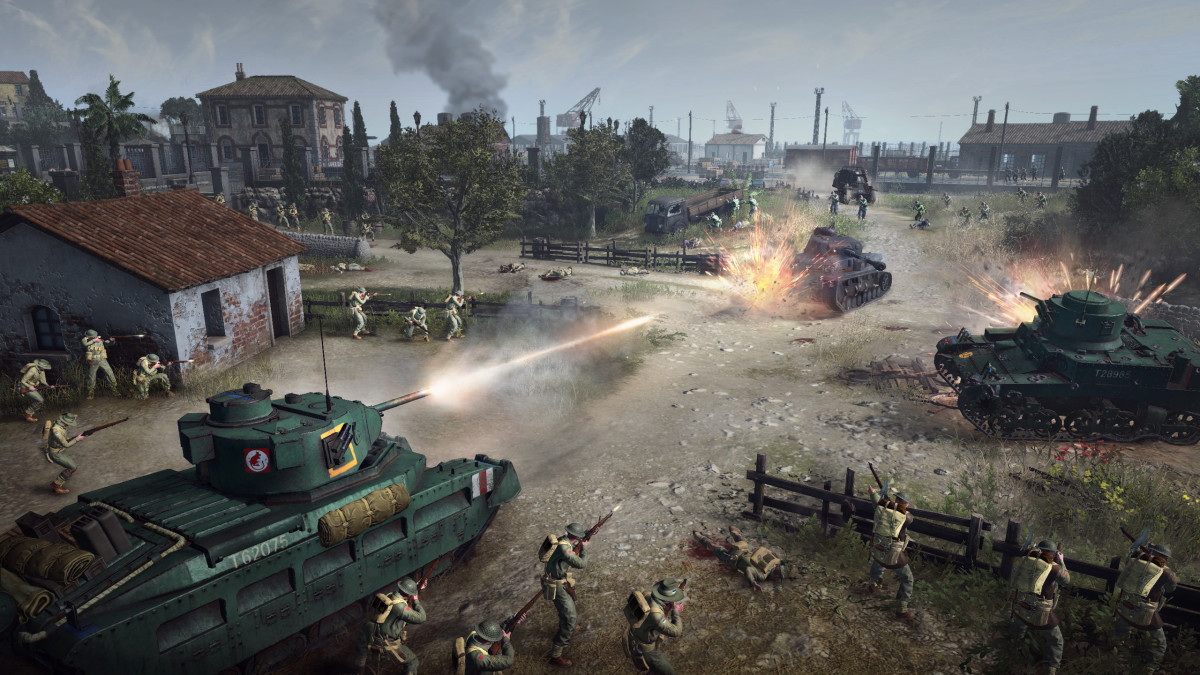
You can command naval and air power to weaken machine gun nests, artillery emplacements, and other defensive structures set up by the Germans on the campaign map, but all that costs ammunition and fuel, so you always have to keep an eye on your supplies. Your companies also need supplies to move and fight, so logistics are vital, and getting units cut off from your supply network is bad news. There are even some city-building aspects here, as you can upgrade supply points and towns in different ways.
While all roads may lead to Rome and the liberation of Italy, it’s completely up to you how this is achieved. You have American and British commanders (who are – intentionally, I assume – very stereotypical in their presentation) as well as Italian partisans giving you advice and optional goals, all of them trying to steer you in a specific direction. If you follow their lead, you can boost your relations with them to gain additional bonuses. The partisan playstyle mentioned earlier is a very different experience from the other two, but requires some commitment.
All of these subsystems work well together to create a coherent experience and offer enough variation to encourage multiple playthroughs. Overall, the dynamic campaign is a well-thought-out and solidly executed addition to the series. It’s also a great foundation for possible future content and a great learning experience for newer players, as it includes various tutorial options.
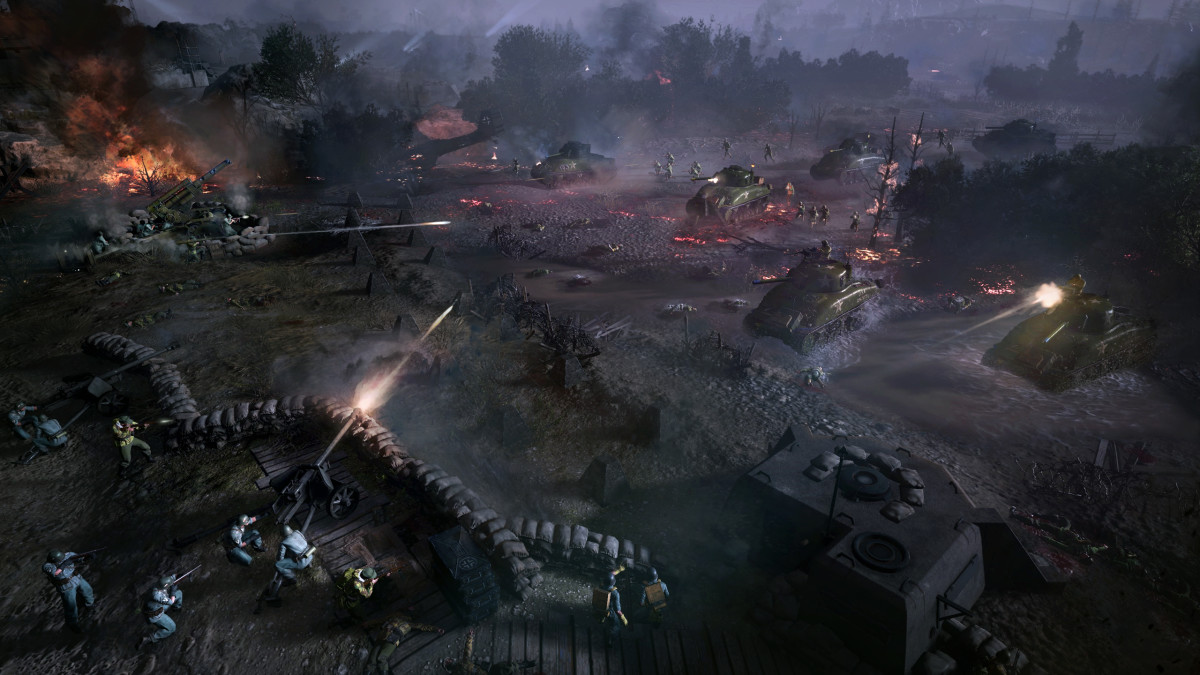
Company of Heroes 3 review: Multiplayer and skirmishes
In the great schismatic divide between RTS games focused on macromanagement (StarCraft, Age of Empires, Supreme Commander) and micromanagement (Warcraft, Dawn of War), the Company of Heroes franchise is proudly carrying the latter’s banner and this hasn’t changed at all with Company of Heroes 3. It keeps intact the series’ key principles of focusing on the action and the units instead of the economics, which is less straining to the players’ attention. Speedy fingers will always be an advantage in the RTS genre, but a game of Company of Heroes 3 can not be won with speed alone.
The series’ multiplayer mode has never been more strategic thanks to the addition of Battle Groups. Like the Doctrines from Company of Heroes 2, the Battle Groups come with various units, abilities, and bonuses that can change a faction's play style – sometimes radically. What makes the battle groups from Company of Heroes 3 so interesting is the variety of choices and units they bring, such as Italian forces for the Afrikakorps and Indian troops for the British.
Each Battle Group contains two different paths with units, abilities, and upgrades that you have to decide on during the course of a game – so where choosing the right Doctrine was a single important decision in the predecessor, the sequel challenges your decision-making several times in a game, opening up another strategic front for players to compete in.
They flesh out the game’s four asymmetrically designed factions – Wehrmacht, Afrikakorps, British, US – to give all of them enough flexibility to adapt to any imaginable situation.
This extra layer of decision-making contributes to the feeling that you exercise more control in Company of Heroes 3 than in its predecessor. The artillery strikes and airstrikes you can call in are still effective, but such point-and-click abilities don't seem to be as deadly as they were in Company of Heroes 2 – a very welcome reduction in the randomness factor. The streamlined vehicle combat is another example of reduced RNG making the game more enjoyable.
Other than that, the core gameplay is still as you know it from earlier entries into the series. Your infantry consists of squads with different models and weapons, which you’ll want to preserve as best as you can to let them gather experience. Vehicles are powerful, but need support. Artillery and other support units can also change the tide of battle, but are vulnerable by themselves. As usual, positioning and combined arms tactics are the keys to success. New toys like towed artillery and the infantry’s ability to ride on vehicles are exciting additions to gameplay, opening up new possibilities. And if you’re just fighting the AI, the new tactical pause system allows you to think your moves through and plan them out in detail, before you lean back and spectate the outcome.
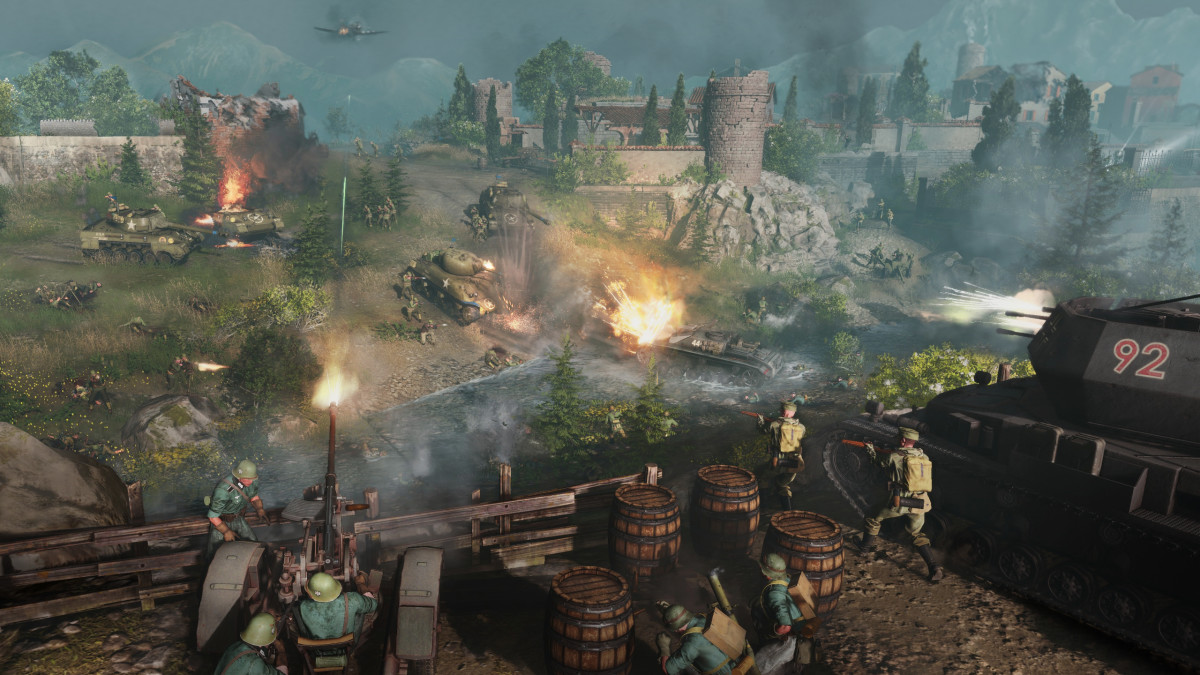
The game features stylized graphics, which is not going to make people looking for photorealistic spectacle happy. What matters much more in RTS games is readability, and here the visuals do their job – once you’ve played a bit you’ll be able to quickly discern which units you’re facing and what kind of artillery strike is currently on your screen. Environmental destruction is present and an important part of gameplay, as it diminishes the available cover. Heavy weapons maybe could have a bit more ‘oomph’ behind them – a Tiger’s shot impacting on a vehicle should feel and sound a bit more powerful than a shot from a lighter vehicle. Overall, it’s fair to acknowledge that the presentation is more practical than spectacular or impressive.
On a technical level, I’ve not had huge issues impacting my experience. There are some instances where machine gun teams seem to get stuck on walls or trenches and following the enemy actions on the Italian campaign map sometimes doesn’t work quite as intended, so you sometimes hear the sound of artillery or dropped bombs going off, but can’t see which of your units or bases was attacked. The animations on the campaign map are a little bit stiff, so it looks wonky sometimes. I noticed some jankiness in the main screen’s UI, which makes inviting friends to a party and checking your skin loadout and such a bit more of a struggle than it should be. Overall though, Company of Heroes 3 might be the most polished release Relic has put out in years and it seems the time gained by delaying the release was put to good use.
The game includes Steam workshop support with an in-game mod manager and you can load custom games with specific mods, so if you want to have matches with everyone starting on the highest tech tier or other variables there’s nothing stopping you and your friends from doing so.
Company of Heroes 3 evolves and innovates without losing any of the series’ heart and soul.
Score: 9/10
Tested on PC.
